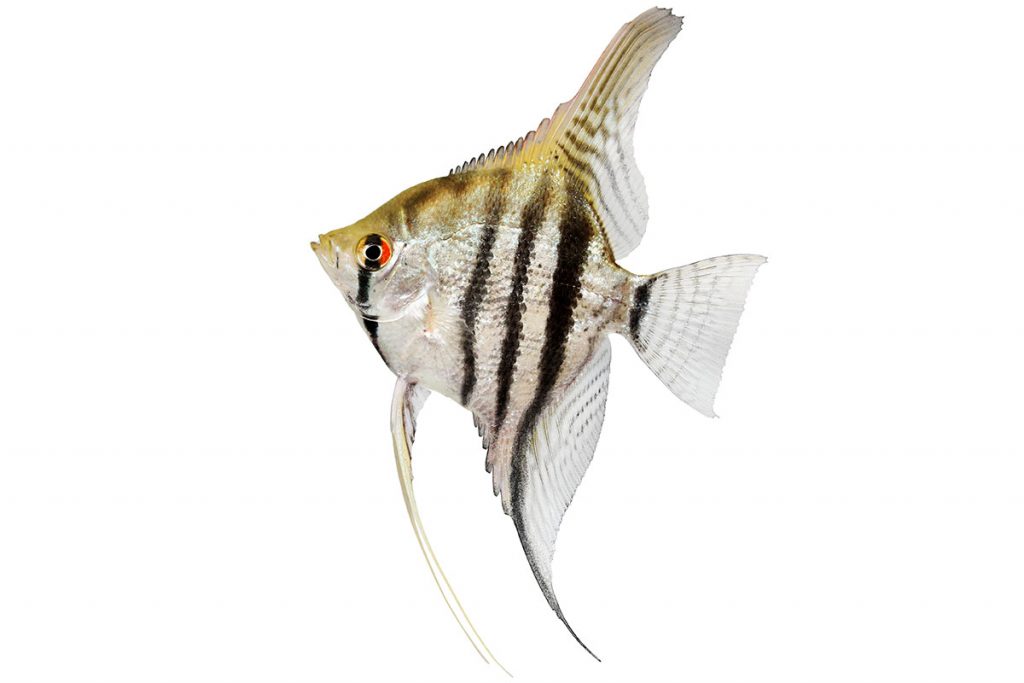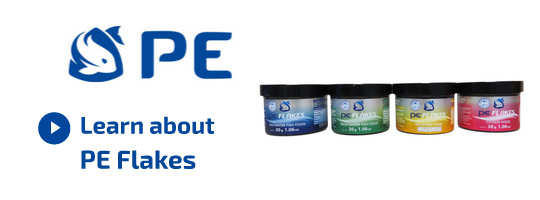Angelfish Species
Angelfish
Freshwater Angelfish are a perennial favorite of the Cichlidae family. These fish have been kept in captivity for many decades, and in that time have been domesticated. Today dozens of strains exist with varying color forms ranging from silvers, to blues, blacks and reds. In addition, there are longfin forms as well, leading to a dazzling array of possible combinations of colors and fin types.
The Silver Zebra Angelfish (Pterophyllum scalare) is one of the most commonly sold varieties of angelfish. Other common varieties include Albino Angelfish (Pterophyllum scalare), Platinum Angelfish (Pterophyllum scalare), Smokey Angelfish (Pterophyllum scalare) and the Koi Angelfish (Pterophyllum scalare).
Biology
Angelfish are native to South America where they are found in Orinoco and Amazon Basins, as well as some surrounding areas. There are currently three recognized species, though the state of the taxonomy is still unclear and it is likely there are several more undescribed subspecies as well. The three currently described species are the Scalare Angelfish (Pterophyllum scalare), the Altum Angelfish (Pterophyllum altum) and the Leopold Angelfish (Pterophyllum leopoldi). They are mid-size fish that will generally max out at approximately 6” (15CM), however they are very tall fish reaching heights of nearly 12” (30CM).
Captive Care
Angelfish can make great aquarium inhabitants, provided their husbandry needs such as diet, water quality and tank space are met. In spite of their namesake, angelfish can at times be nasty tankmates, especially if they are breeding. While they can be kept in community tanks, it is important to choose their tankmates carefully. Bottom dwelling armored catfish such as the Corydoras can be good tankmates, as can other similarly sized non-aggressive fish.
Angelfish prefer a temperature range of 75 F (23C) to 82F (27C). Captive bred, domesticated forms of angelfish are not as sensitive to water quality parameters such as pH as wild collected animals, however it is still important to maintain high water quality and test regularly. Wild varieties such as the Altum Angelfish (Pterophyllum altum), or wild Scalare Angelfish (Pterophyllum scalare) may require a very narrow range of parameters to succeed long term. As always, it is best to thoroughly research the species you are planning to keep.
Suggested Piscine Energetics Products
We suggest a diet based on Piscine Energetics Frozen Mysis, Piscine Energetics Frozen Calanus, Piscine Energetics Pellets (1mm and 2mm) and Piscine Energetics Freshwater Flakes.
What people are saying about PE:
After feeding my seahorses your mysis for about 3 months; they are fat and happy!!! they give me baby seahorses (at least 300 ) each 14 days... So I'm very satisfied of your mysis.The frozen mysis is about 70 per cent of their diet.
Yvan Charbonneau Quebec
I am keeping these Indian mudskippers -- very cute -- about 3-4 inches long. I've been feeding them frozen bloodworm, and decided to try them on mysis. I feed them in a "shallows" in the 150 I have set up for them. The minute the mysis hit the water they were on it, frozen and all. They gorged until their little bellies were almost bursting. I have yet to see an aquatic creature that does not go absolutely nuts over PE Mysis.
David Lass Massachusetts
I picked up my Mysis today and they arrived wonderfully. All the fish I fed them to, absolutely devoured them. They are my Frontosas new favorite food. All my Discus ate them up eagerly...heads and all!! I want to thank you again for your excellent service and product.
Pierre Brenton Nova Scotia
I have a large saltwater aquarium (220 gallons) with very expensive fishes and invertebrates. I tried to feed them with your PE Mysis and they really went crazy about it. Since that time, some of my fishes refuse any other product I offer them!






